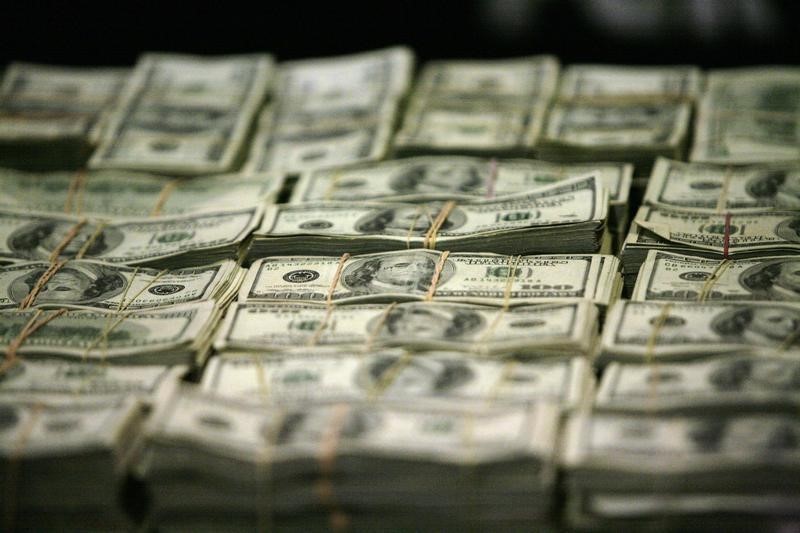Investing.com - The dollar held steady against the other major currencies on Thursday, as investors eyed a fresh batch of U.S. economic reports later in the day, after strong economic growth and employment data on Wednesday boosted demand for the greenback.
The greenback found broad support after data on Wednesday showed that U.S. economic growth for the second quarter was revised higher expected.
A separate report showed that the U.S. private sector added more jobs than expected in July.
Market participants were looking ahead to reports on U.S. jobless claims and personal spending, due later Thursday, for further indications on the strength of the economy.
The yen was weaker, with USD/JPY up 0.24% at a two-week high of 110.51, while USD/CHF held steady at 0.9559.
Safe-haven demand weakened as concerns over geopolitical tensions eased after U.S. President Donald Trump's reaction to the North Korean latest missile test on Monday was seen as more moderate than in the past. The U.S. President did warn that "all options are on the table" however.
EUR/USD added 0.14% to 1.1901, while GBP/USD slipped 0.28% to 1.2888.
The single currency found support after official data showed that consumer price inflation in the euro zone climbed more than expected in August.
Market participants were also focusing on the third round of Article 50 negotiations between the U.K. and the European Union, which was set to end on Thursday.
UK Prime Minister Theresa May was visiting Japan this week to discuss post-Brexit trade ties.
The Australian and New Zealand dollars were weaker, with AUD/USD down 0.13% at 0.7893 and with NZD/USD retreating 0.62% to a nearly three-month low of 0.7157.
The Australian Bureau of Statistics reported on Thursday that private capital expenditure increased by 0.8% in the second quarter, beating expectations for a 0.3% rise.
Separately, Reserve Bank of Australia Philip Lowe said “the current market pricing implies a greater probability of a rate rise, than a rate reduction”, before adding that “it also implies that the next move in interest rates is a long way out.”
Data also showed on Thursday that the ANZ Business Confidence Index for New Zealand slipped to 18.3 this month from 19.4 in July.
Meanwhile, USD/CAD eased up 0.08% to trade at 1.2630, the highest since August 18.
Traders also continued to monitor developments in Houston and the Gulf Coast, amid uncertainty over the impact of hurricane Harvey on the oil sector.
The U.S. dollar index, which measures the greenback’s strength against a trade-weighted basket of six major currencies, was steady at 92.89 by 05:20 a.m. ET (09:20 GMT), the highest since August 28.
